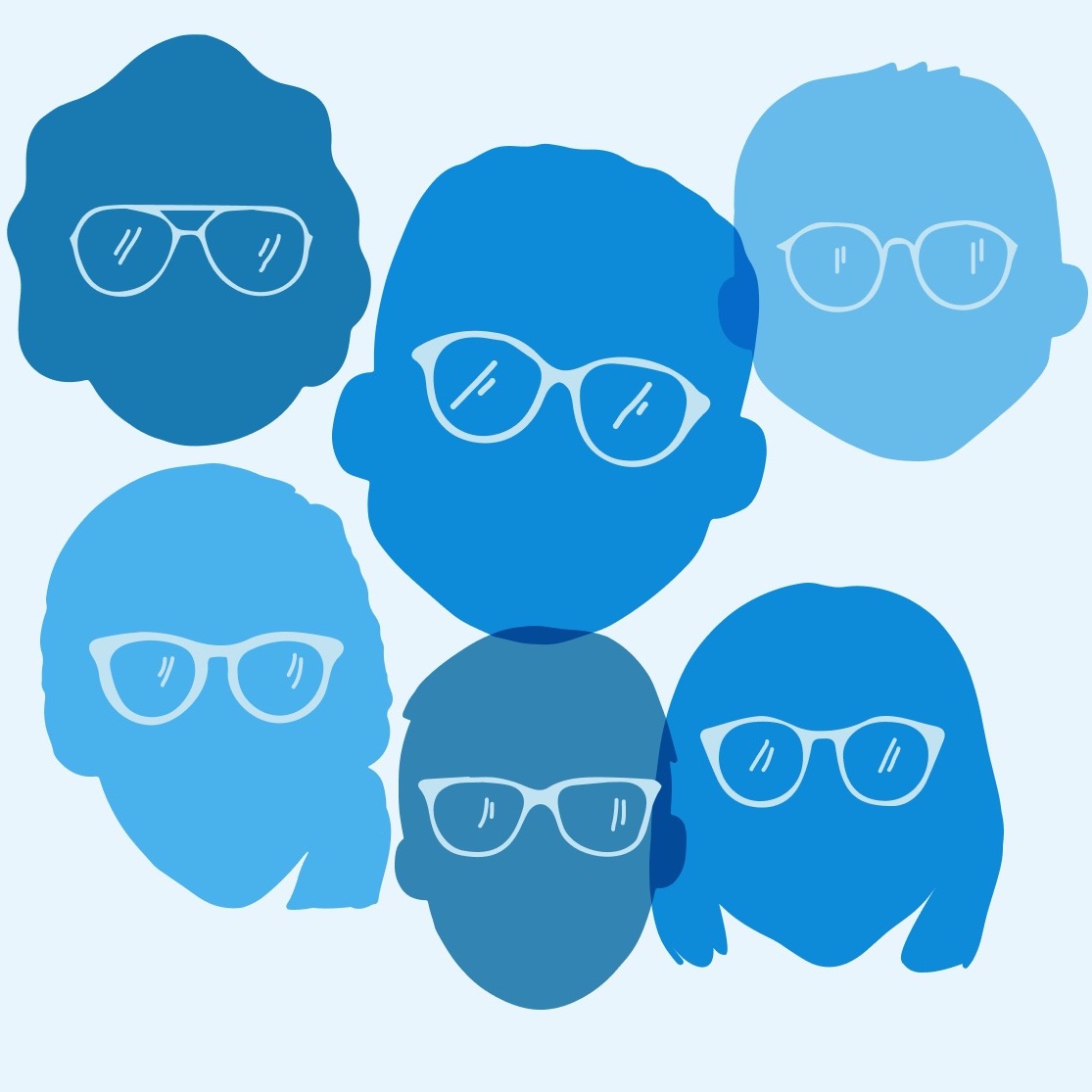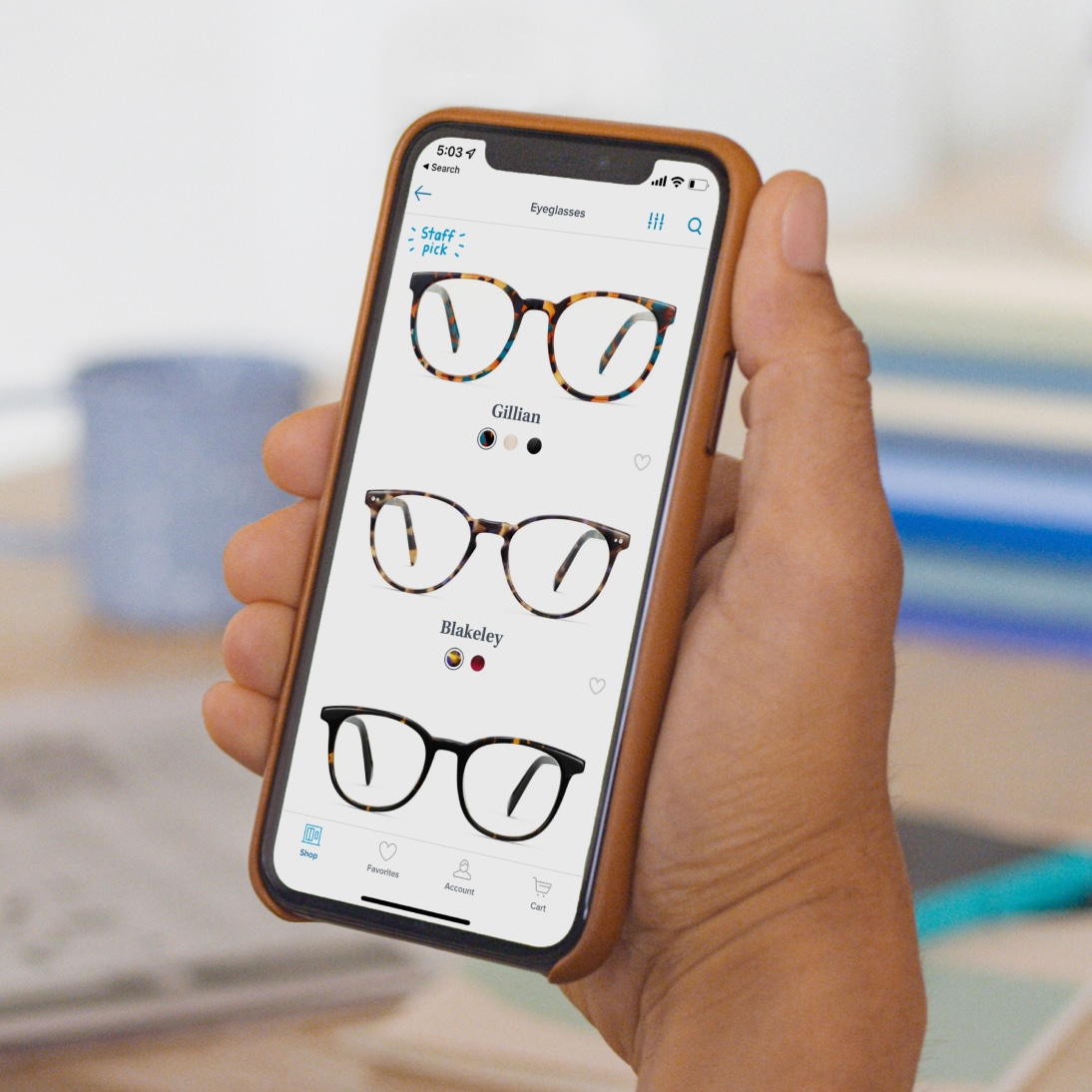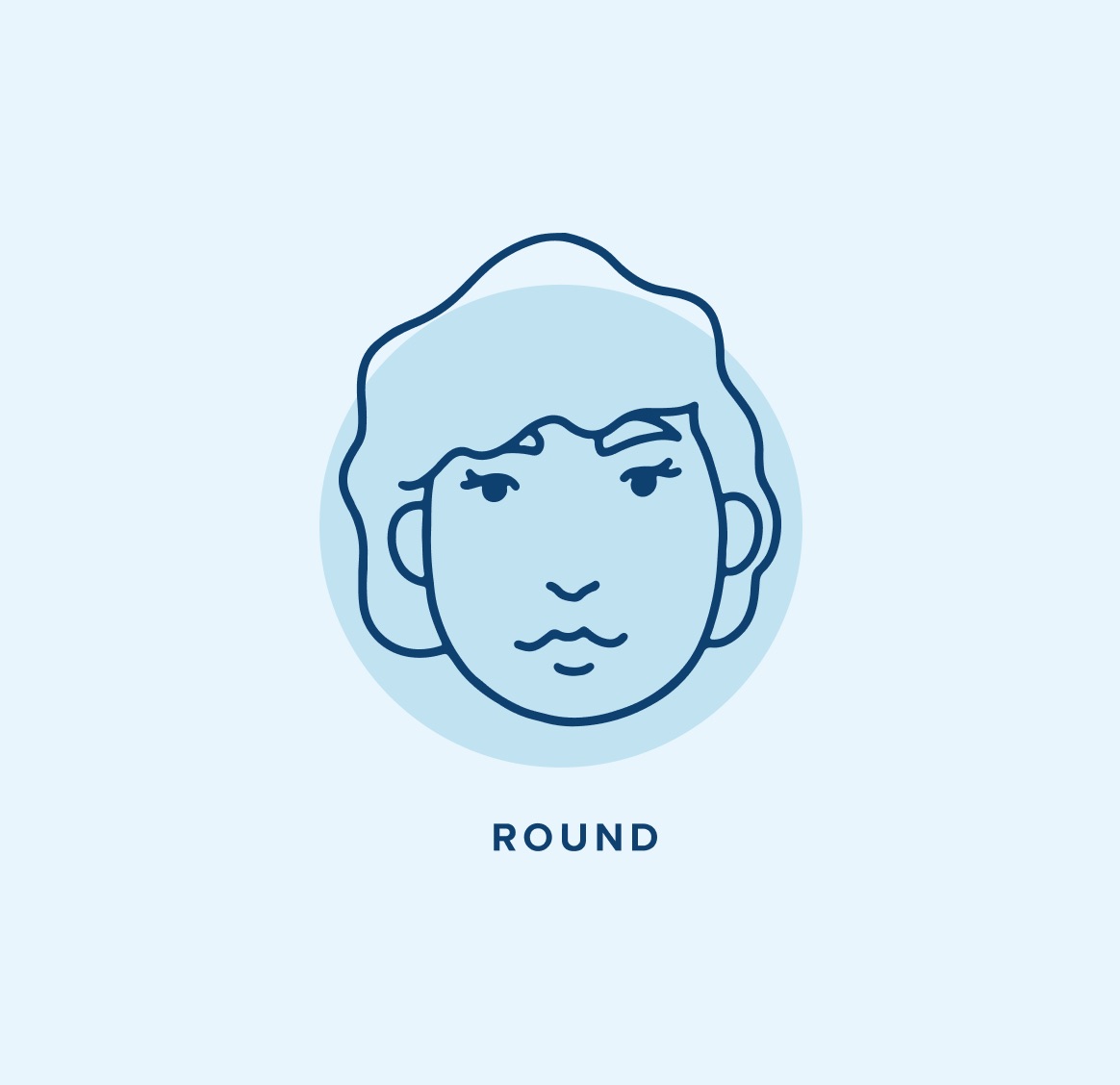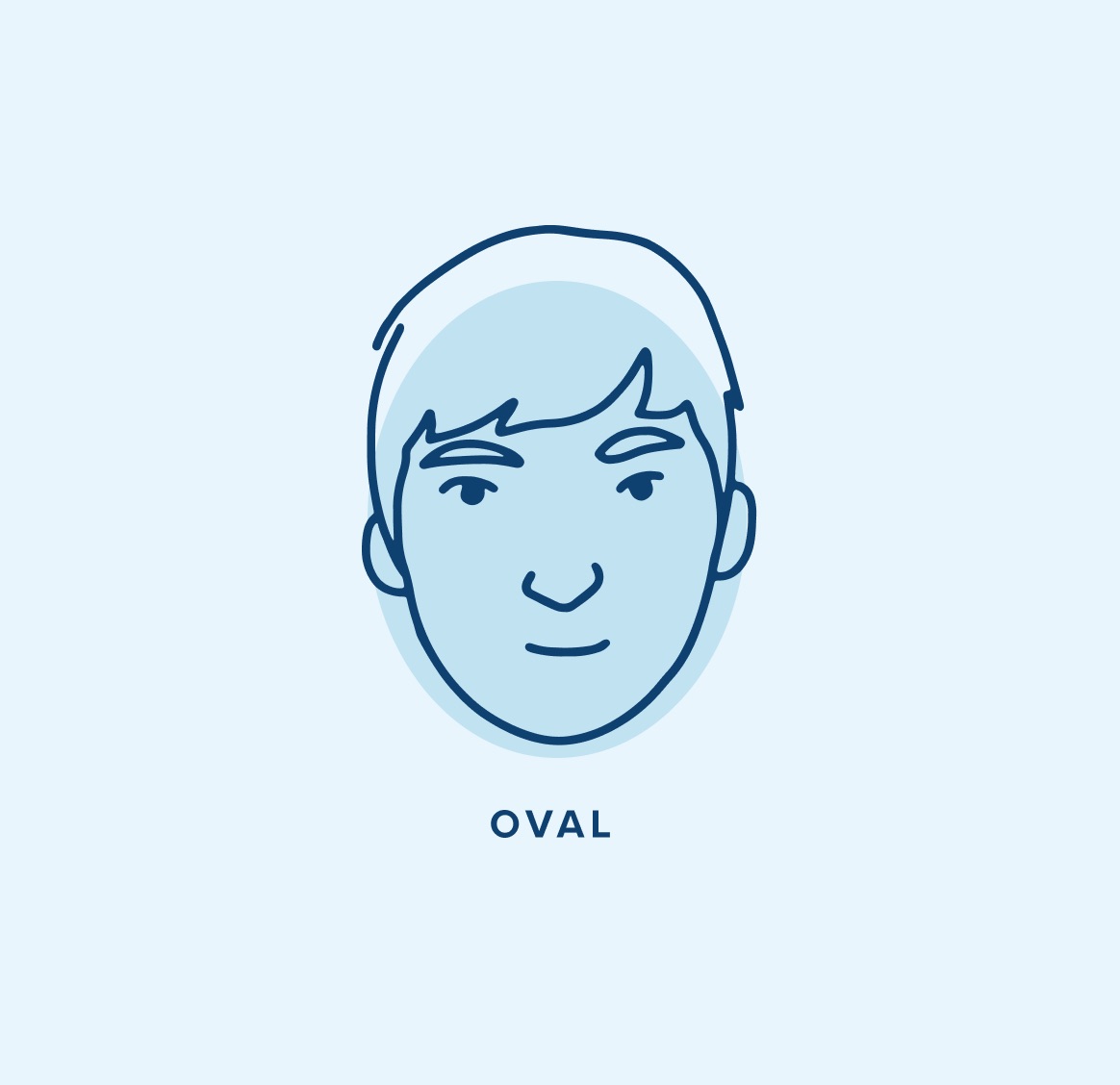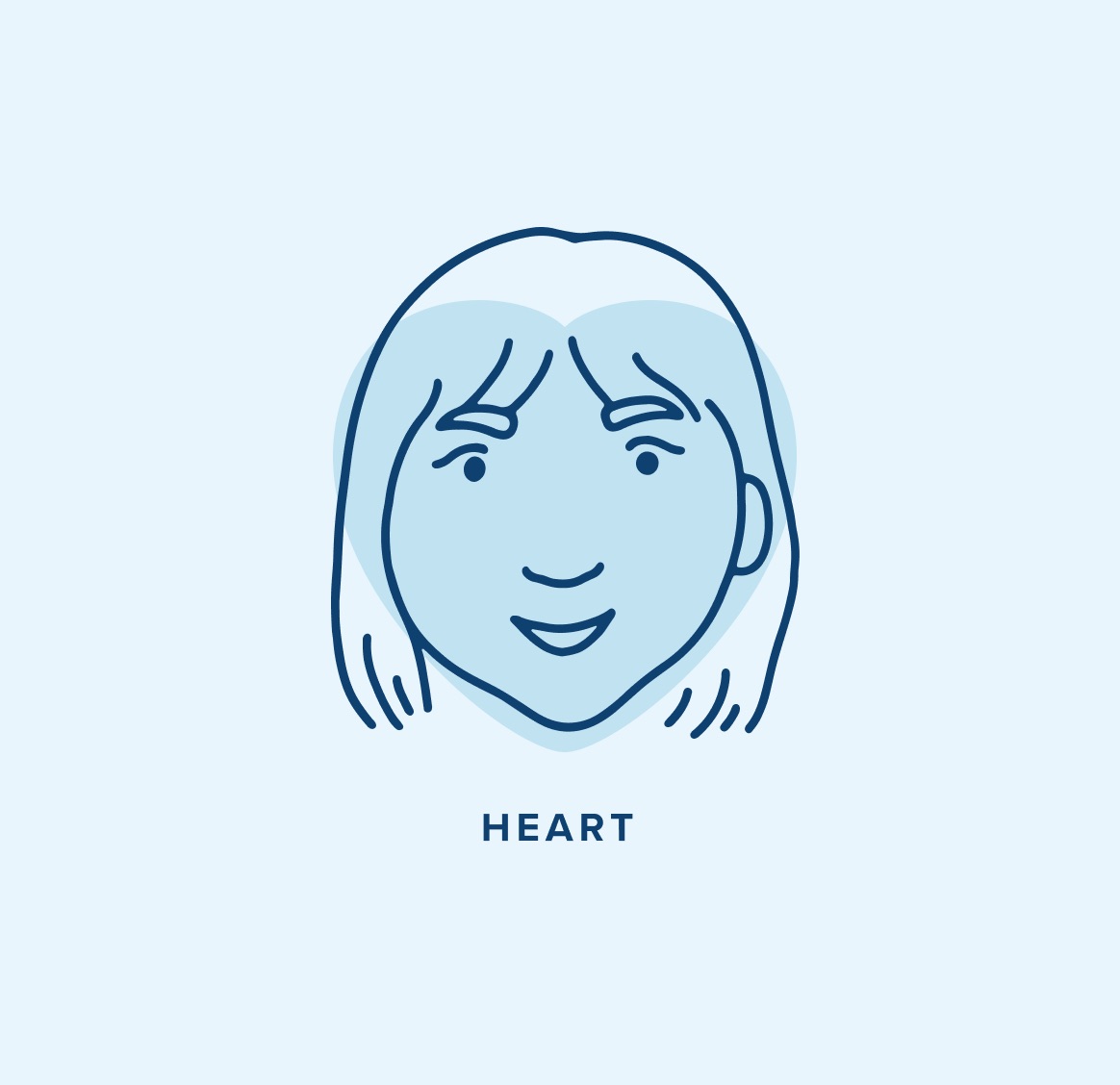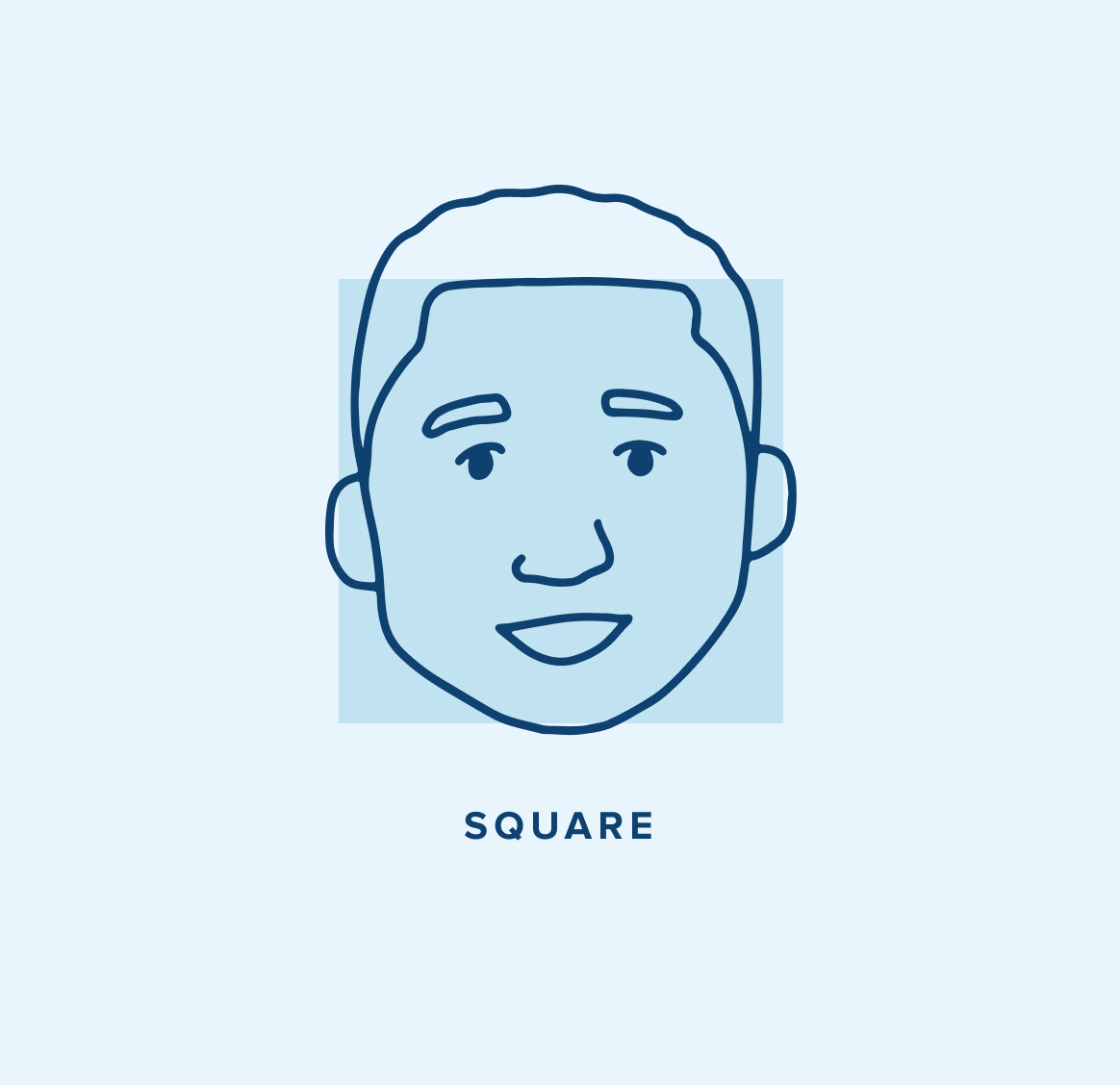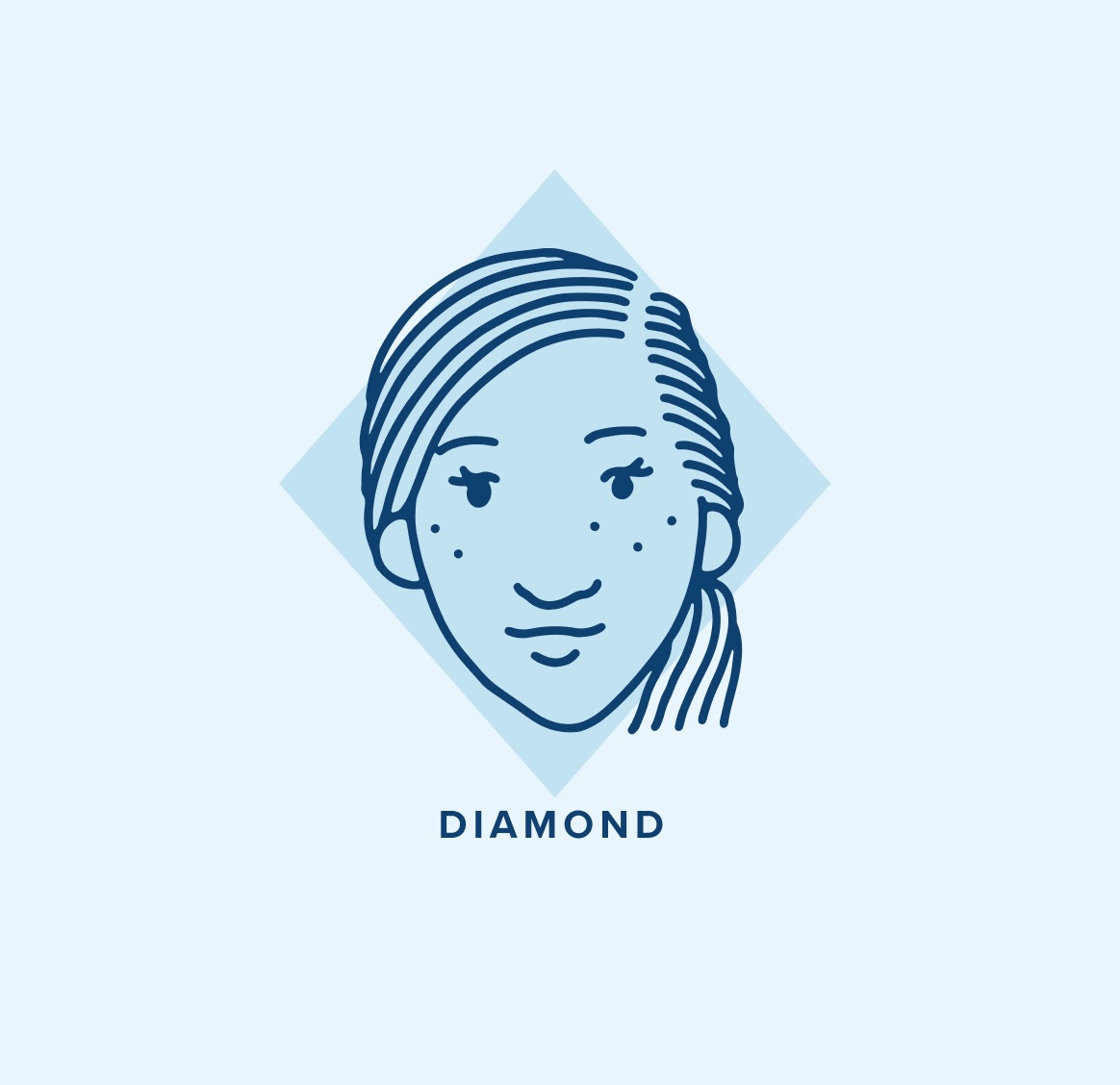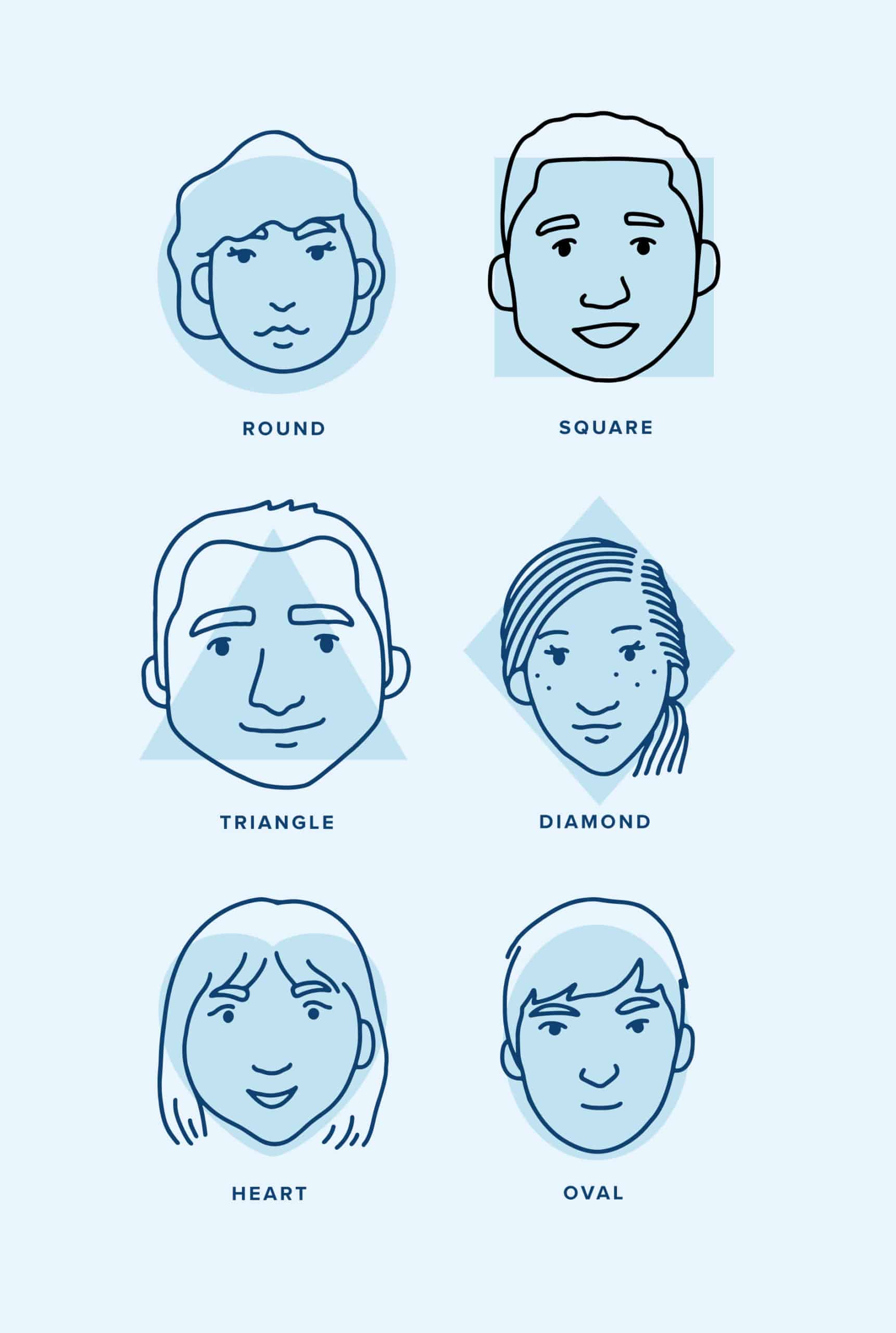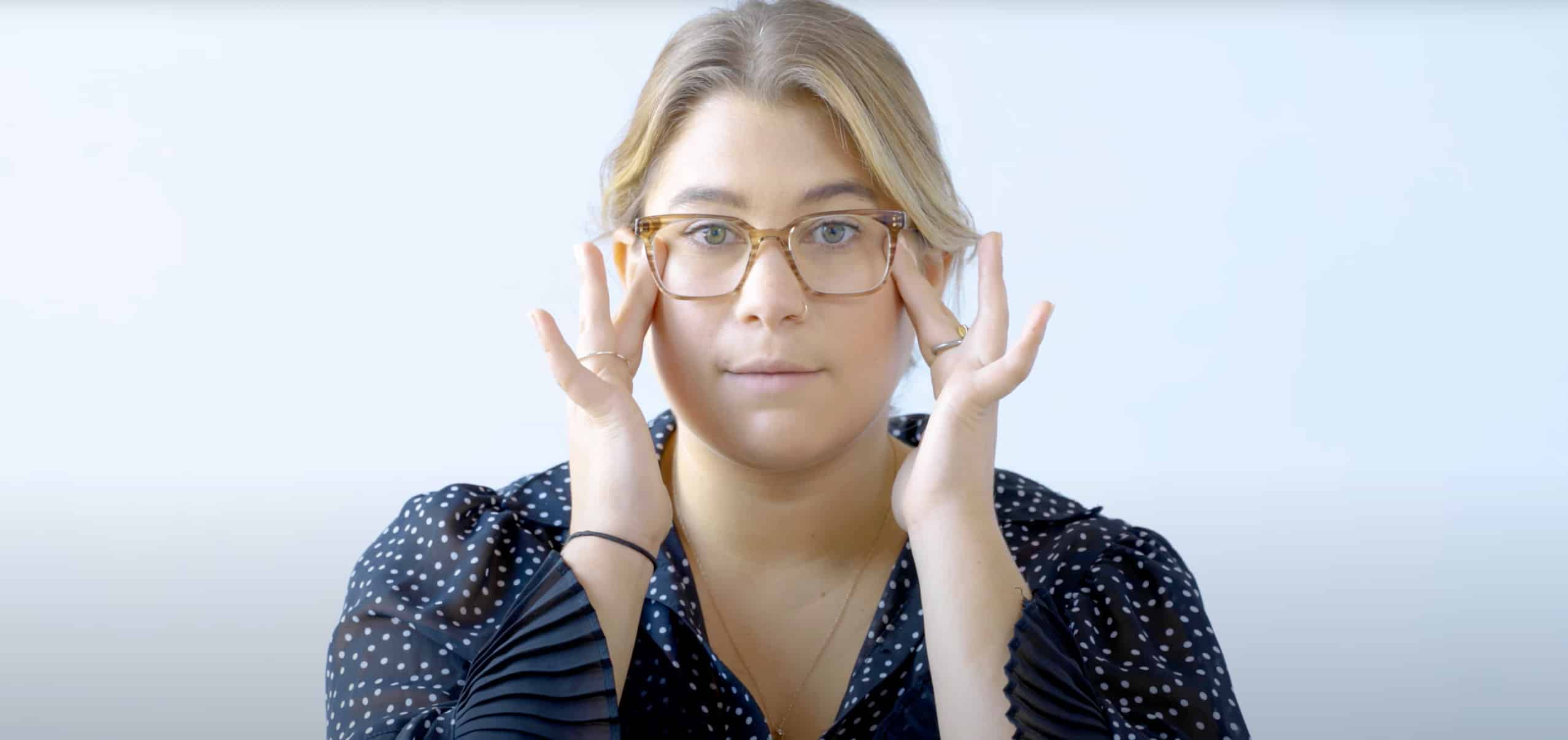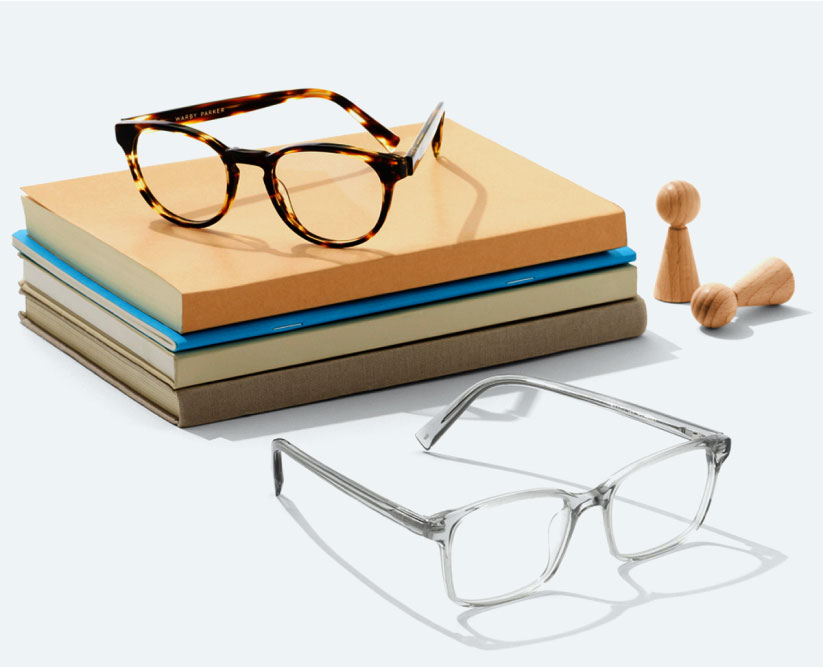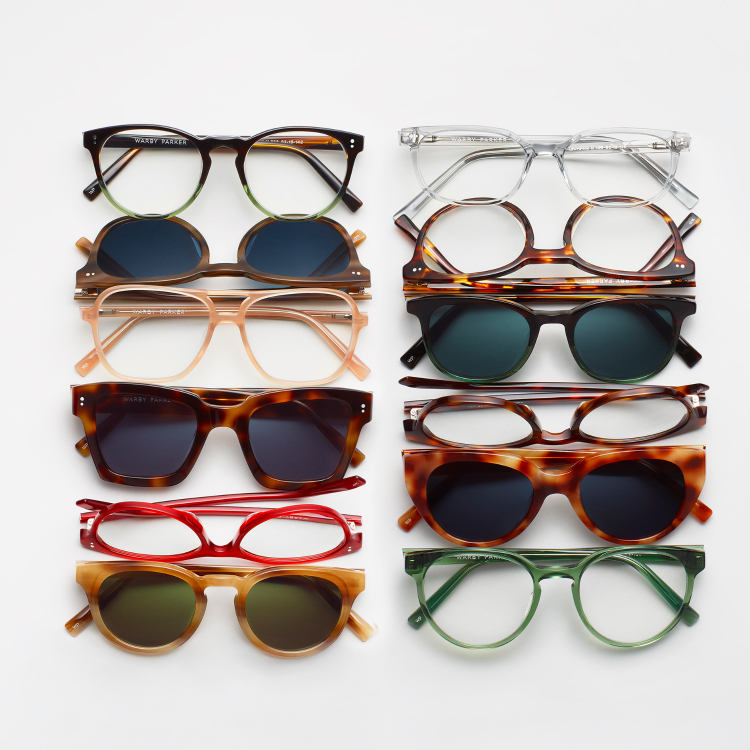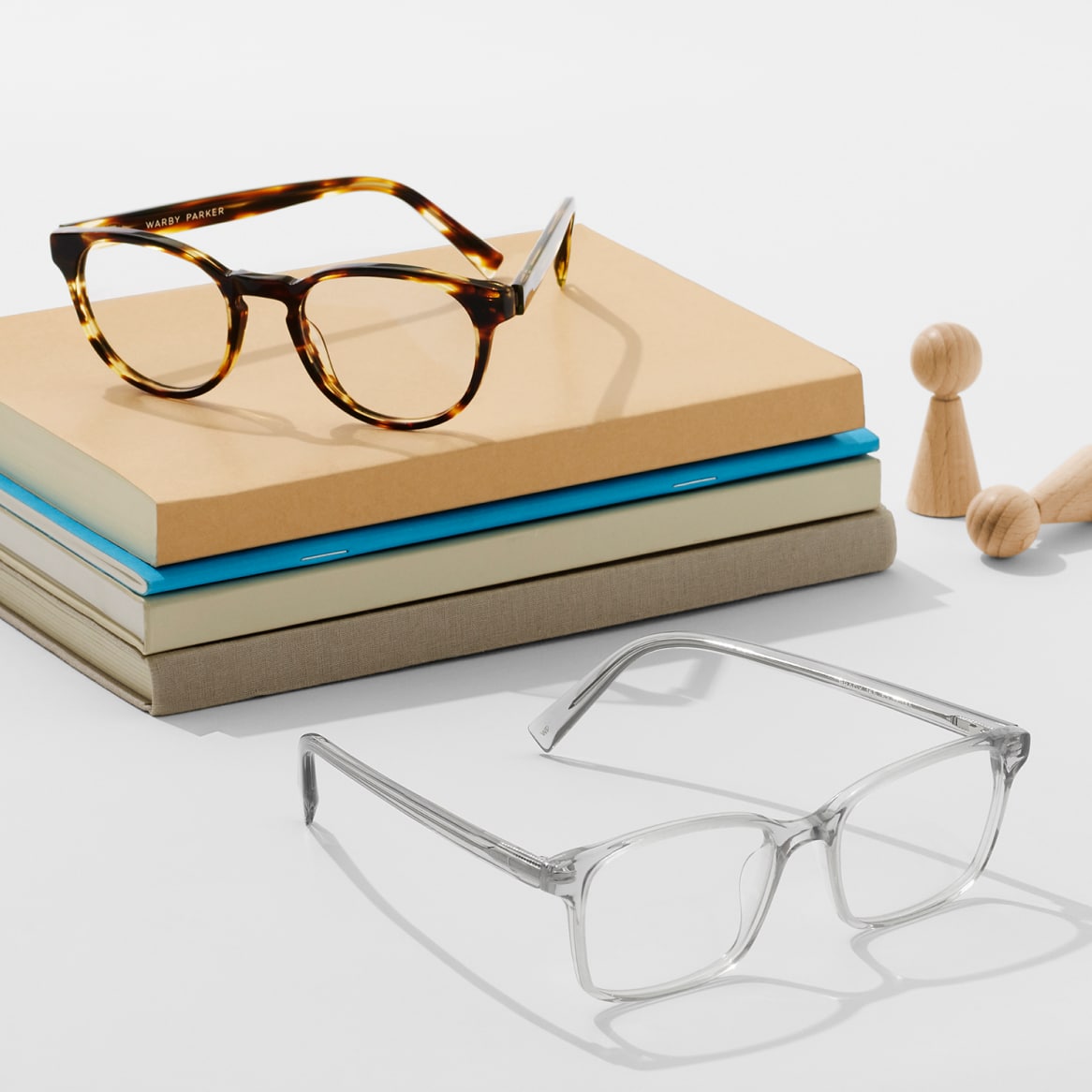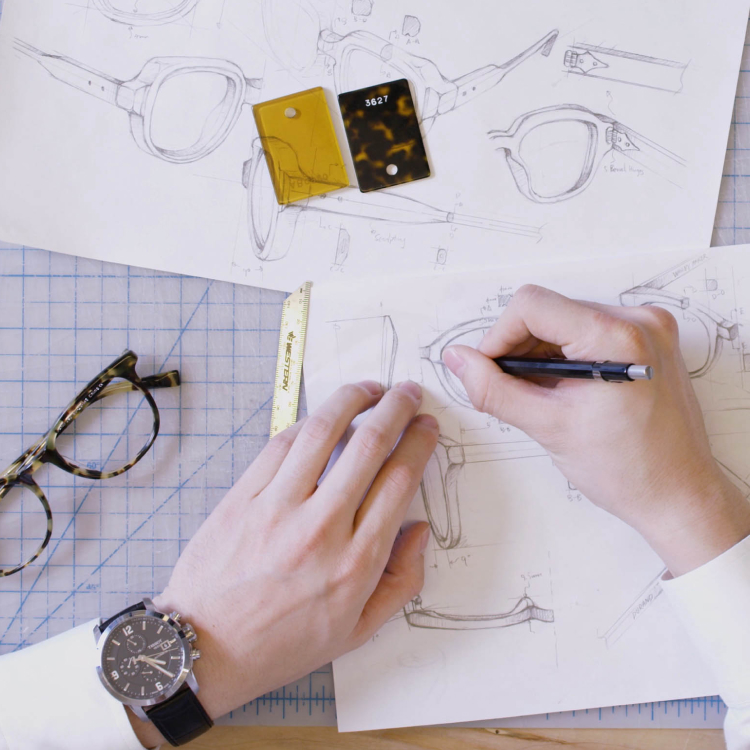When picking out a pair of glasses, you’ll probably weigh a list of factors that includes color, size, and fit. As you narrow your search for the perfect frames, another factor you certainly don’t want to ignore is your face shape.
Knowing which face shape you have can help you choose glasses that suit you. Certain frames can accentuate the features you most want to highlight, or they can work with the natural lines and angles of your face to create a well-balanced look.
Of course, face shape is only one (optional) part of the search for your new glasses, and it should never outweigh your personal style or comfort. Finding glasses frames for your face shape isn’t a science, and it’s definitely not a law you have to follow. Instead, you can think of face shape as a useful tiebreaker if you’re stuck between a few frames you like. Or consider it a fun element of the shopping process—“fun” being the key word.
“But,” we can hear you asking your screen, “what face shape do I have?” Not to worry. We’ll help you figure it out.
What Is My Face Shape for Glasses?
No two people have the exact same face shape (save for identical twins, clones, and the occasional doppelganger). But when looking at general outlines, we can group face shapes into six categories: round, oval, heart, square, triangle, and diamond.
Take a look in the mirror or snap a selfie. Note where your face is widest and narrowest. If you’d like, take a few basic measurements and scribble them down: the width of your forehead, from the uppermost point of one cheekbone to the other, and horizontally across your jaw. Then measure from the midpoint of your hairline down to the tip of your chin.
Check the descriptions below to find out which of the different face shapes you have. But don’t take these as the end-all-be-all! Your face may not exactly match any of these shapes—you’re just looking for the closest match.
Round Face Shape
Round faces have curvy, smooth lines and similar proportions—the width of the forehead is about equal to the width of the jaw, and the face is about as long as it is wide. Basically, it maps nicely onto a circle!
Round-faced folks tend to have full cheeks and an overall softness to their features that makes them look cheerful.
Oval Face Shape
Oval is the most common face shape out there. It’s characterized by an ever-so-slight narrowing at the forehead and chin, with the widest part of the face spanning the cheekbones. Alternatively, the face may have an even width all the way down from brow to jaw.
The chin and forehead are rounded rather than sharp, and the face is roughly twice as long as it is wide. The resulting effect is one of even proportions.
If you think you have an oval face but your chin, jaw, and/or forehead are a bit more square or angular, then some people would call your face shape “rectangular” or “oblong.” The general guidelines for oval faces would still apply to you!
Heart Face Shape
A heart-shaped face (sometimes called an inverted triangle face shape) is widest at the forehead, and it becomes progressively narrower moving down its length all the way to a tapered jaw and chin. Heart face shapes often have high cheekbones.
Square Face Shape
A square face shape has straight, angular lines. The cheekbones should be about as far apart as the jaw and forehead are wide, and the chin often has defined corners rather than a softly rounded curve.
People often use the word “strong” to describe square faces—their features are clearly and crisply delineated.
Triangle Face Shape
A triangle face shape has a broad jawline and a narrower forehead. The face becomes slightly slimmer as you move upward from the jaw, and the cheekbones are likely to be less pronounced than in other face shapes.
Triangle face shapes are relatively rare and memorable for their compelling jaws and chins.
Diamond Face Shape
Another rare face shape, diamond faces are at their widest across the cheeks and less wide across the forehead and jaw. Like heart-shaped faces, they often have high cheekbones that lend them an element of glamour. Their chins tend to be small.
Face Shape Chart
Our face shape chart should make the subtle differences between these shapes more noticeable. Take a look!
The Best Glasses for Each Face Shape
Now that you’ve learned about the most common face shapes, you’re probably curious about how glasses come into play. The good news: Finding stylish glasses frames for your face shape is an art that anyone can learn.
And remember, it’s also optional! There are no rules here, and you’ll probably want to take your personal style and the fit of the frames into account. (We’ll talk more about fit a little later.) Whatever makes you feel most confident, that’s what you want to go for.
Glasses for Round Face Shapes
If you think you have a round face, you’re in a great position to play up bold frame elements like thick, straight lines, and sharp corners. Fabulous glasses for round faces often have wide, rectangular frames that add eye-catching angularity. Or frames with thick browlines that complement round cheeks.
We recommend rectangle glasses, square glasses, geometric glasses, cat-eye glasses, browline glasses, or full-rimmed glasses.
Glasses for Oval Face Shapes
If you’re someone with an oval face, lots of frames will flatter you. Our biggest tip is to go for wide rather than narrow ones, as wide frames will balance out the length of your face.
Otherwise, the glasses world is your oyster. You can opt for curvier frames if your chin and jawline are more sharp, or angular frames if you’d like to play off the rounded parts of your face. Worried that your cheekbones are fading into the background? Glasses with pronounced or upswept corners are your friend.
We recommend almost any type of frame! Just try to go as wide as your face’s widest zone (usually across the eyes or cheeks).
Glasses for Heart Face Shapes
Heart-shaped faces are wider on top than they are on the bottom, so go for frames that are a bit wider than your forehead, creating a balanced portrait. This approach not only evens out a broad forehead, but it can help to strengthen your chin.
Rounded frames can also offset the “pointiness” of a heart-shaped face’s lower half, so aim for curved bottoms even if the upper corners of your glasses are sharp.
In general, though, heart-shaped faces are very easy to match with many types of glasses, and the choice depends on what features you’d most like to emphasize. Some people with heart-shaped faces go for semi-rimless frames so the glasses don’t steal the spotlight too much!
We recommend oval glasses, round glasses, aviator glasses, or semi-rimless glasses.
Glasses for Square Face Shapes
Glasses with curves are excellent at balancing the clean, straight lines of a square face. They’ll soften your features without competing with them, especially if the frames are stylishly thin or semi-rimless.
Choose frames that are wider than the middle of your face and that sit fairly elevated on your nose—that way, they’ll complement your strong jawline from above.
We recommend round glasses, oval glasses, wire glasses, or semi-rimless glasses.
Glasses for Triangle Face Shapes
A triangle face shape benefits from frames that emphasize the top more than the bottom, thereby creating harmony with the face’s broad jawline. Wide frames can help add dimension to the narrow upper portion of the face.
Don’t be afraid of playful details on the brows of your glasses, whether they’re cat-eye swoops or decorated hinges.
We recommend rectangle glasses, browline glasses, or cat-eye glasses.
Glasses for Diamond Face Shapes
Like triangle faces, diamond face shapes look stunning in glasses that combine lighter bottoms with slightly thicker browlines. Rounded frames can also play well with a diamond face’s angles. Because diamond faces narrow at both the top and bottom, the frames should maintain a bit more evenness throughout their shape—no need for super-dramatic details.
Browse horn rim and browline glasses with this balancing act in mind, and see which frames speak to you.
We recommend browline glasses, cat-eye glasses, round glasses, oval glasses, or semi-rimless glasses.
Face Shape Is a Guide, Not a Rule
When exploring eyeglass frames for your face type, feel free to think outside these recommendations—or reject them entirely. After all, face shape is far less important than fit and personal style.
Fit
Buying glasses that fit you well is obviously important for your comfort, but it also helps with your vision correction. It’s tough to see clearly out of ill-fitting glasses that slide around or are too small for your face.
How do you know if your glasses fit? In this short video, we highlight a list of things to look for:
You might also want to look into specialized frame styles that cater to more specific features. People with low nose bridges, for example, can benefit from glasses with a Low Bridge Fit.
Personal Style
There’s no mathematical formula that will tell you which pair of glasses suits you best. Most often, the choice comes down to your personal sense of style—one that’s totally unique to you and makes you feel good.
If you’re not sure how to articulate your aesthetic, just ask yourself: “How would I describe my style? What look am I going for? Are there words that I associate with how I dress or how I present myself?”
For example, are you fun and quirky with a flair for the dramatic? If so, a cat-eye frame might match well with your spark. Do you skew more understated and sophisticated but still want to stand out? In that case, bold rectangular frames might do the trick.
You’ll also want to consider color, of course! Bright and crystal hues can enliven any frame shape, whereas muted colors can lend an air of composure and elegance.
If you’re still not quite sure how to define your personal style as it pertains to glasses, try taking our frame quiz—we made it for this exact scenario.
Our final recommendation: Don’t say no to a pair of glasses that entices you, just because they’re the “wrong” style. Try ’em on! The frames that are best for your face shape, whatever that shape might be, are simply the ones you like most.

